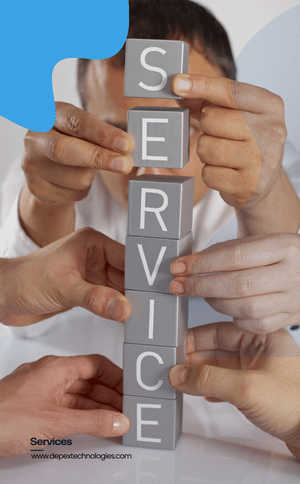How to Build a Successful Quick Commerce Website: Key Features and Development Tips
Quick commerce, or q-commerce, is reshaping the eCommerce industry by offering rapid delivery of products, often within hours. It’s an exciting trend driven by consumers who want immediate access to products, particularly essentials like groceries, daily supplies, and other high-demand items.
Building a successful quick commerce website goes beyond creating an online store. It requires focusing on speed, user experience, and seamless integration with logistics. In this blog, we’ll explore the key features of a quick commerce website and share valuable development tips. Whether you’re a business owner venturing into q-commerce or a developer building such a platform, this guide will help you succeed.
What is Quick Commerce?
Quick commerce is an eCommerce model that prioritizes ultra-fast delivery—typically within an hour or a few hours. Unlike traditional eCommerce, which can take days to fulfill orders, quick commerce focuses on offering fast fulfillment, usually for small, high-demand products. It’s a model designed to serve urban consumers who want what they need right away.
Key Features of a Successful Quick Commerce Website
- Real-Time Inventory Management
In quick commerce, having accurate, real-time inventory data is crucial. Since products need to be delivered quickly, it’s important to ensure that your stock levels are constantly updated. If an item goes out of stock, it can lead to delays or cancellations, which frustrate customers.
Why It’s Important:
- Prevents order cancellations by ensuring accurate stock information.
- Helps streamline order fulfillment and delivery processes.
- Provides a smooth experience for customers who expect fast service.
Development Tip:
Integrate an automated inventory management system that syncs with your website in real-time. This ensures your website’s stock levels are always accurate.
- User-Friendly Design and Navigation
Your website should be easy to use and navigate. In a quick commerce setting, time is of the essence, so your site should make it quick and easy for users to find and purchase products.
Why It’s Important:
- A clean, simple design improves user experience.
- Easy navigation leads to faster purchases.
- Reduces cart abandonment by keeping users engaged.
Development Tip:
Organize products into clear categories, and use filters to help users find what they need quickly. Keep the design clean and intuitive, focusing on usability.
- Optimized Website Speed
A slow website can ruin the user experience, especially for a quick commerce site where speed is the core offering. Every second counts, and a slow-loading page could lead to lost customers.
Why It’s Important:
- Faster websites have higher conversion rates.
- Speed directly impacts search engine ranking.
- Customers expect a quick load time, or they’ll move on.
Development Tip:
Optimize images, reduce unnecessary scripts, and use a content delivery network (CDN) to improve load times. Regularly test and monitor your site’s performance.
- Fast and Simple Checkout Process
A complex checkout process can cause cart abandonment, so it’s important to keep the checkout flow as simple and fast as possible. This is especially true for quick commerce, where customers expect an immediate, seamless experience.
Why It’s Important:
- A fast, frictionless checkout increases conversions.
- Reduces the likelihood of abandoned carts.
- Makes the process as quick as the delivery time itself.
Development Tip:
Enable guest checkout, offer multiple payment options, and minimize the number of required steps. Auto-fill forms to speed up the process and ensure an easy checkout experience.
- Real-Time Delivery Tracking
Since your business promises fast delivery, providing real-time order tracking is essential. Customers want to know when their products will arrive, and offering tracking updates can help build trust and transparency.
Why It’s Important:
- Increases trust by keeping customers informed.
- Helps manage expectations regarding delivery times.
- Reduces customer anxiety about late or missing orders.
Development Tip:
Integrate delivery tracking features that allow customers to follow their orders in real-time. Offer notifications or updates via email or SMS about the order’s status.
- Mobile Optimization
With mobile commerce growing, ensuring your quick commerce site is mobile-friendly is crucial. Many users will access your platform via their smartphones, and a responsive design ensures they can shop on the go.
Why It’s Important:
- A mobile-optimized site enhances the shopping experience on smartphones.
- Google prioritizes mobile-friendly websites in search rankings.
- Mobile optimization increases conversion rates among mobile shoppers.
Development Tip:
Design your website with a mobile-first approach, ensuring it looks and functions well on all screen sizes. Simplify navigation for mobile users and make sure forms are easy to fill out.
- AI-Powered Customer Support
Instant customer support is vital for quick commerce platforms. AI-powered chatbots can provide immediate assistance, answering common questions or tracking order status, helping to reduce wait times and improve customer satisfaction.
Why It’s Important:
- AI chatbots offer instant, 24/7 support to customers.
- Reduces wait times and provides quick answers.
- Enhances the user experience by offering real-time help.
Development Tip:
Use AI-powered chatbots to handle customer inquiries, track orders, and address frequently asked questions. Ensure that the system can escalate issues to human agents when needed.
- Analytics and Insights
Understanding customer behavior and sales trends is crucial for optimizing your quick commerce platform. Advanced analytics help you identify popular products, track user interactions, and make data-driven decisions to improve your service.
Why It’s Important:
- Provides insights into customer preferences and behaviors.
- Helps improve your offerings and marketing strategies.
- Tracks key performance indicators (KPIs) like conversion rates and customer retention.
Development Tip:
Integrate analytics tools like Google Analytics and customer segmentation to gather actionable insights. Use A/B testing to optimize your website and continuously improve the user experience.

Tips for Developing Your Quick Commerce Website
- Choose the Right Technology Stack
Select a technology stack that’s flexible, scalable, and capable of handling high transaction volumes. Consider options like custom-built solutions or platforms like WooCommerce and Shopify for quicker deployment. - Integrate Logistics Systems
Ensure your logistics and inventory management systems are fully integrated with your website for real-time tracking and fast fulfillment. The more streamlined your logistics, the quicker you can deliver. - Invest in SEO
Quick commerce websites need to be discoverable. Invest in SEO best practices by optimizing your site’s structure, using keywords strategically, and creating high-quality content to boost visibility. - Ensure Security and Compliance
Since you’ll be handling customer data, it’s important to use secure payment systems and comply with data protection regulations like GDPR. Build trust with customers by prioritizing privacy and security.
Conclusion:
A successful quick commerce website is built on speed, efficiency, and a great user experience. By focusing on features like real-time inventory, a simple checkout process, and delivery tracking, you can ensure customers have a smooth and satisfying experience. Speed and reliability are key to keeping customers happy and coming back.
If you’re ready to build a fast, efficient, and scalable quick commerce platform, Depex Technologies is here to help. Our expert team can design and develop a custom solution tailored to your business needs. From dedicated developers to full development teams, we ensure your project is handled with care and expertise. Contact Depex Technologies today to take your quick commerce website to the next level.






